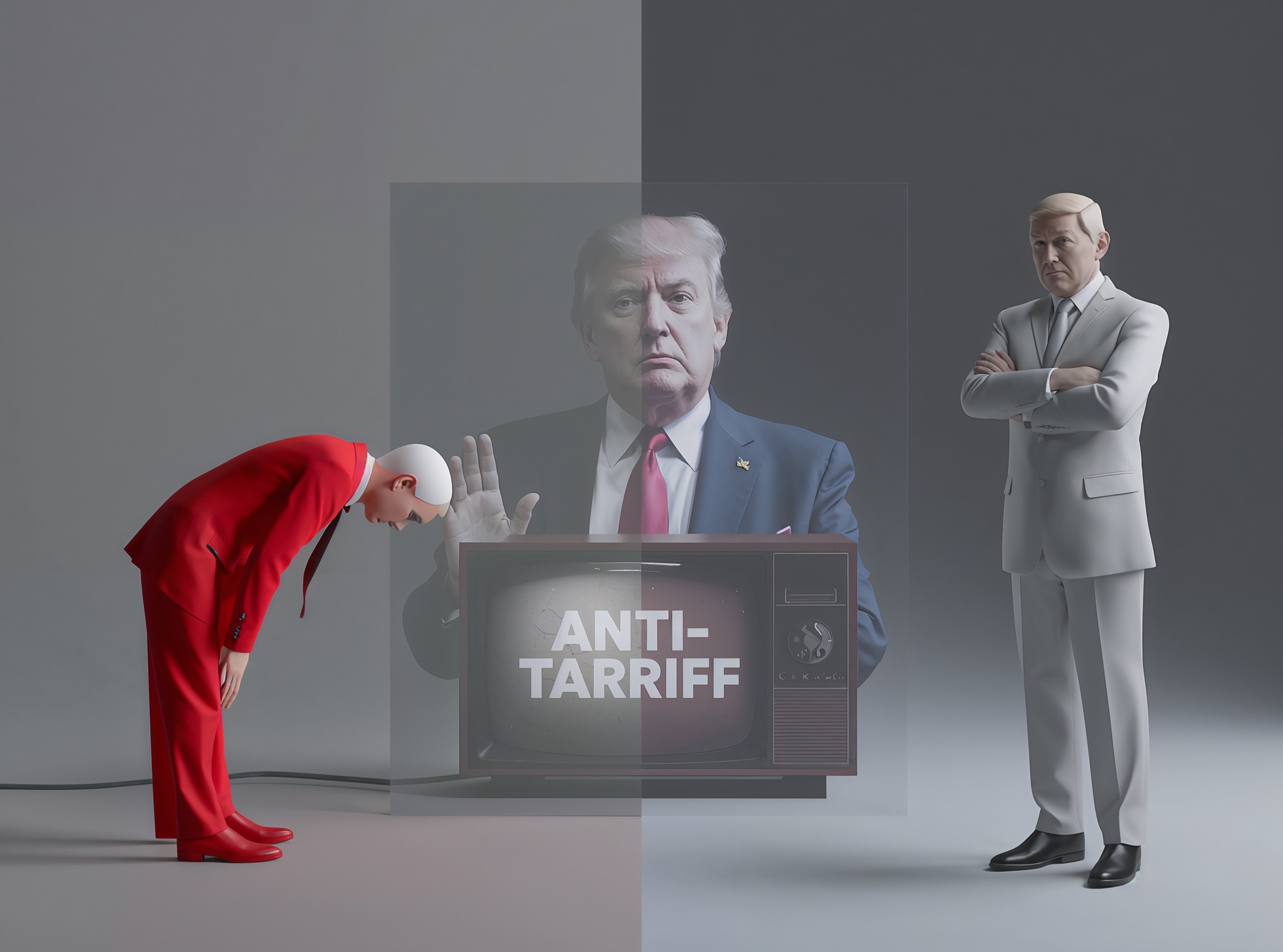A televised ad used Ronald Reagan’s warning about tariffs. It ran in major U.S. markets and reached the audiences that drive policy. It also reached the White House. As the clip spread, the U.S. side paused trade talks with Canada and signaled tariff risk. Because the U.S. absorbs a large share of Canadian exports, even a brief pause unsettles pricing, orders, and hiring plans. Consequently, Canada moved quickly to lower the temperature.
𝗧𝗵𝗲 𝗮𝗽𝗼𝗹𝗼𝗴𝘆 𝗮𝗻𝗱 𝘁𝗵𝗲 𝗿𝗲𝘀𝗲𝘁 𝗮𝘁𝘁𝗲𝗺𝗽𝘁
During meetings in Asia, Canada’s prime minister addressed the issue directly with President Trump. He apologized for the ad, explained he had opposed airing it, and emphasized the need to protect the broader relationship. That conversation created space to rebuild working-level contacts. It did not restart negotiations on the spot, yet it removed a political roadblock and set a path for technical teams to re-engage when conditions allow.
𝗪𝗵𝗮𝘁 𝗺𝗮𝗱𝗲 𝘁𝗵𝗲 𝗥𝗲𝗮𝗴𝗮𝗻 𝗰𝗹𝗶𝗽 𝘀𝘁𝗶𝗻𝗴
Reagan remains a powerful symbol for many Republicans and for a broader free-trade narrative. When a foreign jurisdiction spotlights Reagan to critique current tariffs, it reads less like policy debate and more like pressure on a domestic political argument. Therefore optics dominated substance. Moreover, this unfolds inside a charged election calendar, so officials show little tolerance for anything that looks like outside influence. As a result, the dispute escalated quickly and spilled into trade policy.
𝗜𝗺𝗺𝗲𝗱𝗶𝗮𝘁𝗲 𝗿𝗶𝘀𝗸𝘀 𝗳𝗼𝗿 𝗖𝗮𝗻𝗮𝗱𝗶𝗮𝗻 𝗶𝗻𝗱𝘂𝘀𝘁𝗿𝘆
Autos, agriculture, metals, forestry, and chemicals feel tariff chatter first. Pricing bands widen, purchase orders slip, and hedging costs rise. Suppliers hesitate to ship parts cross-border. In addition, retailers delay seasonal inventories because uncertainty punishes margins. Even a modest tariff band can erase thin margins, freeze capex, and threaten payrolls in regions tied to U.S. demand.
𝗦𝗰𝗲𝗻𝗮𝗿𝗶𝗼𝘀 𝘁𝗼 𝘄𝗮𝘁𝗰𝗵 𝗶𝗻 𝘁𝗵𝗲 𝗻𝗲𝘅𝘁 𝟯𝟬–𝟲𝟬 𝗱𝗮𝘆𝘀
Best case: rhetoric cools and talks reopen with no tariff change. Negotiated step-down: a defined increase posts, then rolls back if Canada accepts specific terms. Hardening positions: both sides apply targeted measures that avoid consumer-facing categories yet still bite. Election overhang: if campaign dynamics dominate, formal progress may wait until key political dates pass.
𝗦𝗶𝗴𝗻𝗮𝗹𝘀 𝘁𝗵𝗮𝘁 𝘁𝗵𝗲 𝗮𝗽𝗼𝗹𝗼𝗴𝘆 𝘄𝗼𝗿𝗸𝗲𝗱
Watch for softer language from senior U.S. figures, even if staff stay quiet. Track scheduling notes that point to technical meetings. Review tariff guidance for delays, carve-outs, or refined product scopes that ease pressure on Canadian inputs. Calmer references to auto parts, agricultural quotas, and aluminum suggest relief where supply chains feel it most.
𝗣𝗿𝗮𝗰𝘁𝗶𝗰𝗮𝗹 𝘀𝘁𝗲𝗽𝘀 𝗳𝗼𝗿 𝗲𝘅𝗽𝗼𝗿𝘁𝗲𝗿𝘀 𝗮𝗻𝗱 𝗖𝗙𝗢𝘀
Map exposure by tariff line so the team knows exactly where a 5% or 10% change bites. Model price elasticity by segment; some buyers tolerate pass-throughs, others churn. Stage alternate routing and warehousing to cut border dwell time. In parallel, tighten working capital: shorten receivables, lengthen payables where relationships allow, and trim slow-moving SKUs to free cash. Brief lenders and boards now so financing doesn’t seize if headlines turn again.
𝗦𝘂𝗽𝗽𝗹𝘆 𝗰𝗵𝗮𝗶𝗻 𝗮𝗻𝗱 𝗰𝗼𝗺𝗽𝗹𝗶𝗮𝗻𝗰𝗲 𝗮𝗱𝗷𝘂𝘀𝘁𝗺𝗲𝗻𝘁𝘀
Documentation will face more scrutiny, so clean country-of-origin, rules-of-origin, and valuation records reduce audit risk. Training cannot sit only with specialists; line managers need refreshers so everyday decisions don’t create avoidable fines. Supplier diversification matters, but over-correction costs money; build options with secondary vendors that can ramp within weeks instead of tearing up core relationships overnight.
𝗣𝗼𝗹𝗶𝘁𝗶𝗰𝘀 𝗮𝗻𝗱 𝘁𝗵𝗲 𝗽𝗮𝘁𝗵 𝗳𝗼𝗿𝘄𝗮𝗿𝗱
Provincial decision-making created the ad, and federal officials must now manage the fallout. In Washington, tariff authority, litigation timelines, and party strategy intersect, which narrows choices in public even when technical room for compromise exists behind the scenes. Leaders who want stability can still sequence low-drama steps: restore staff contact, pause escalatory rhetoric, and pursue discrete sector fixes while they rebuild trust.
𝗕𝗼𝘁𝘁𝗼𝗺 𝗹𝗶𝗻𝗲 𝗳𝗼𝗿 𝘀𝘁𝗮𝗸𝗲𝗵𝗼𝗹𝗱𝗲𝗿𝘀
Protect predictability. Communicate with customers about delivery windows and price protections, because clarity preserves relationships when rumors swirl. Keep contingency budgets for expedited freight and quick vendor ramp-ups if talks resume without warning. Maintain FX hedges where exposure demands it, and avoid one-way bets on a single outcome. The apology removed one obstacle; momentum can return if both sides prioritize market stability over campaign optics.
FAQs
Q: Does the apology restart negotiations immediately?
A: Not automatically. However, it removes a political obstacle and enables staff to schedule technical meetings that can reopen the door to formal talks.
Q: Which sectors feel tariff risk first?
A: Autos, agriculture, aluminum, steel, forestry, and chemicals feel the shock earliest because cross-border inputs, pricing windows, and inventory cycles react quickly.
Q: What can exporters do while talks stall?
A: Diversify suppliers, pre-plan routing, protect FX exposure, and update contracts with tariff pass-through clauses. Additionally, keep customers informed to preserve trust.
Q: Could a modest tariff band still hurt?
A: Yes. Even small increases can erase thin margins, freeze capex, and trigger layoffs in regions tied to U.S. demand. Therefore contingency planning matters now.










